


Chinatown started off in the same circumstances as many other ethnic communities that moved to Chicago during the 18th century. Originally settling in what is now Chicago’s Loop neighborhood around 1870, they were forced out due to increasing anti-Chinese sentiment among locals1 (following the infamous Chinese Exclusion Act of 1882, implemented due to increasing discontent on the west coast2) and property rents being significantly raised. They moved to the South Side, where rent was lower and formed what is now known as South Chinatown – called so as a second Chinatown (‘North Chinatown’ or ‘New Chinatown’3) was formed around Argyle and Broadway on the North Side during the mid 1970's20. Today, there are over 100,000 Chinese Americans1 living in Chicago alone (the city’s fastest growing ethnic group! 4), representing ethnic Chinese that emigrated from China, Vietnam, Laos and Cambodia1 decades or even over a century ago.

We entered Chinatown through the impressive Chinatown gate. Installed in 1975 and designed by Peter Fung based on a similar gate in Beijing, the sign below reads ‘The World Belongs To The Commonwealth’ (A phrase dating back to the early 1900's13) - meaning formed for the common good. The gate acts visually as gateway to Chinatown, a gateway to a new world and one of the first things people see when they enter the neighborhood.
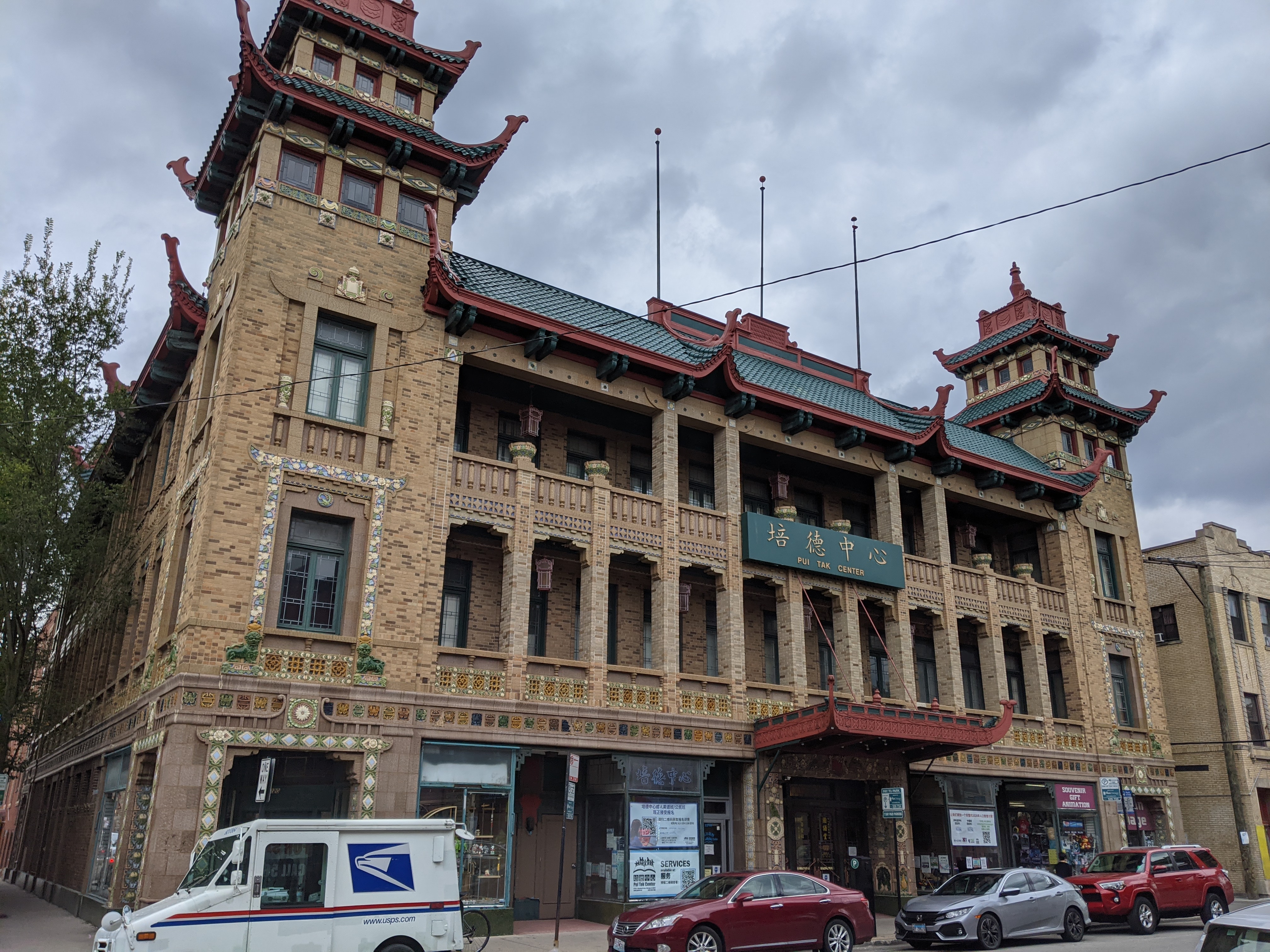
Starting walking along Wentworth, the street is filled with items of visual interest – small, colorful businesses selling all types of things, from gifts and trinkets to ramen and hot pot restaurants, and from grocery stores to medicine shops. The area has a very Americanized Chinese feel – traditional American style buildings and construction techniques with street facing fronts that are ornamental and colorful, hallmarks of Chinese architecture. The native language here is Cantonese, the main language spoken in the southern regions of China, including Guangdong province, Hong Kong and Macau, reflecting the origins of many of Chinatowns first settlers1.
The first of these buildings that stood out for me was the Pui Tak Center. The building is an example of ‘yanglou’ (Western-style Building) style architecture and reminds locals of their old homeland in Guangdong1. Built in 1928 as the headquarters of the On Leong Merchants and Laborer’s association, it stands prominently right in the center of Chicago’s Chinatown. With a fraternal style culture, the On Leong Merchants and Laborer’s association acted as a sanctuary for Chinese migrants who were being persecuted after arriving on the west coast in California. When the migrants arrived, and in exchange for a small fee, the society helped the arriving Chinese with adapting to American life, including American customs, Immigration policies (which were noticeable incredibly strict on Asians, with Asian immigration being banned in its entirety in 19244), setting up businesses and settling disputes6. The society discouraged competition between merchants to reduce conflict, and while backward in its treatment of women (it still wouldn’t accept female members into the 1950s6) their mission has led to the success of many Chinese in Chicago, and America. Today the building still serves a similar purpose, as a church based community center, providing education and access to better jobs than immigrants would otherwise have access to7.
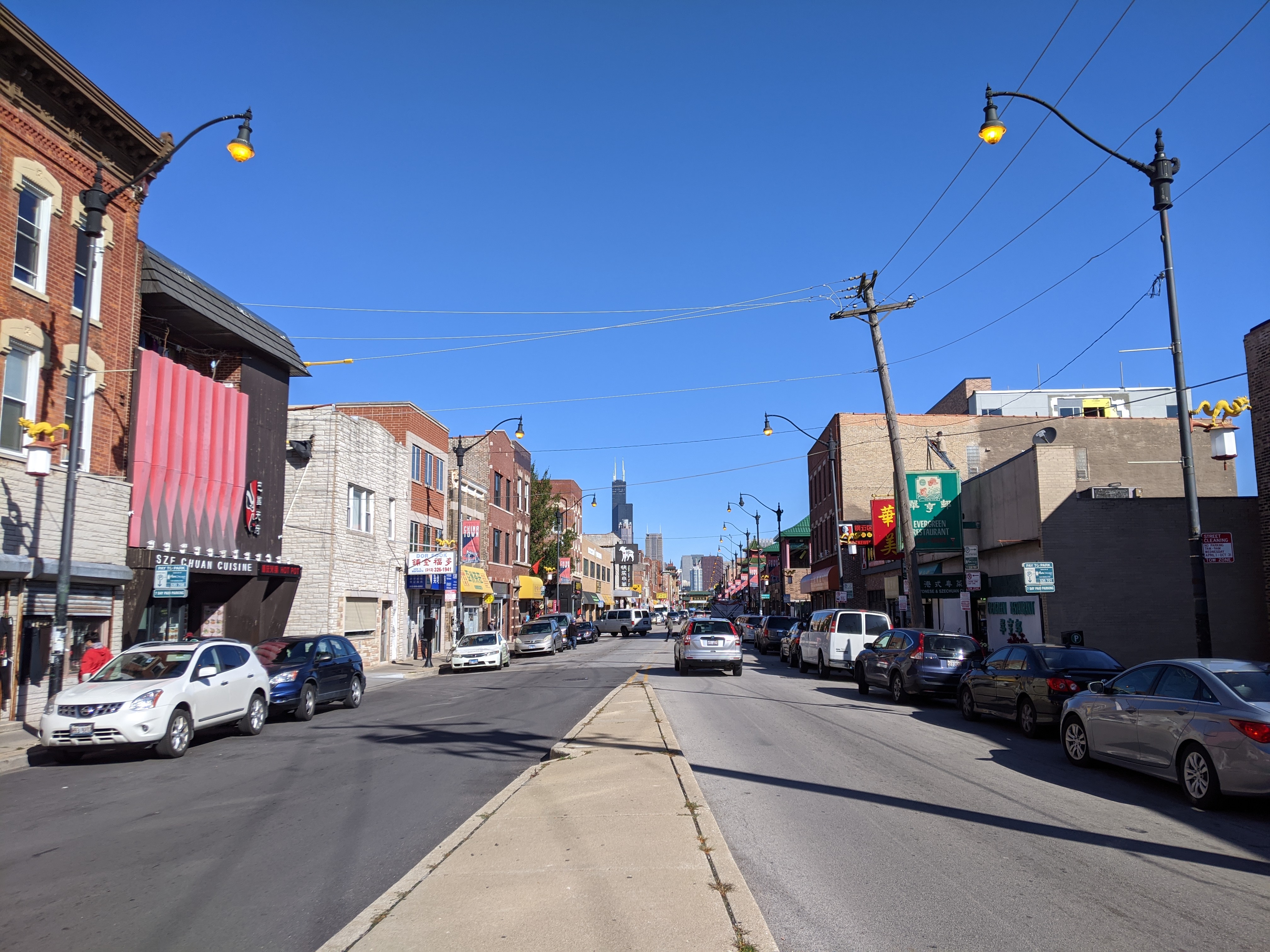

As we continued down Wentworth, we passed several restaurants, cafes and bakeries. People come from far and wide to eat on this street, and as result there is now a large variety of places to eat here. However, careful attention has been paid to the neighborhoods main street – on the corners of the streets lie dragons carved into the sidewalk, patterns line the divide between the sidewalk and the road and many building names and much of the signage is still in Chinese – proof that this neighborhood is still home to many locally run businesses. These points add visual interest, and have led to it becoming a tourist destination in recent years4. However, as the neighborhood abruptly ends at the highway, which bounds the neighborhood on 2 sides, we turned right into the much more residential part of the neighborhood. Here we found the small (but significant) park; the Sun-Yat-Sen Park. This park was created back in the 1950s, when the highways that bound the neighborhood were built though here (destroying 2 local parks), to bring back some green space to the neighborhood8. The park is named after Sun Yat Sen, known as the ‘father of modern China’, who after an American education in Hawaii became disillusioned with the Qing dynasty, and plotted to overthrow it. He played a significant part in the ‘revolution of 1911’ becoming president from 1911 to 1912 and later went on to become Chinas de facto ruler from 1923-19259. He was a figurehead for democracy in China, and he was the leader of the nationalist party (that still exists in Taiwan).

The Chinese Americans played a pivotal part in American society – they even fought in our wars at a time when the Chinese Exclusion Act was still in play, and when the Second World War (WWII) was over, they returned to their lives in the United States like nothing had happened. However, recently, the United States have tried to change that. In 201710, a large memorial was installed on the corner of Cermak, Princeton and Archer, right in the middle of the modern-day Chinatown neighborhood, to pay tribute to Chinese-Americans that have fought patriotically for a country that was trying to exclude them. The Chinese in America fought in numerous wars, with significant presence in the Civil War, WWI and WWII – despite the fact that until 1943, most of them didn’t even have the right to claim citizenship (veterans exclusively were given the right to claim citizenship following WW1)11. Their presence in these wars was significant (over 18000 served in WWII alone), and yet very little has been written or recorded about the Chinese presence in these wars. In recognition of their service, in 2018 Chinese American veterans were collectively rewarded the Congressional Gold Medal for their service, but due to covid-19 the ceremony is yet to occur12.
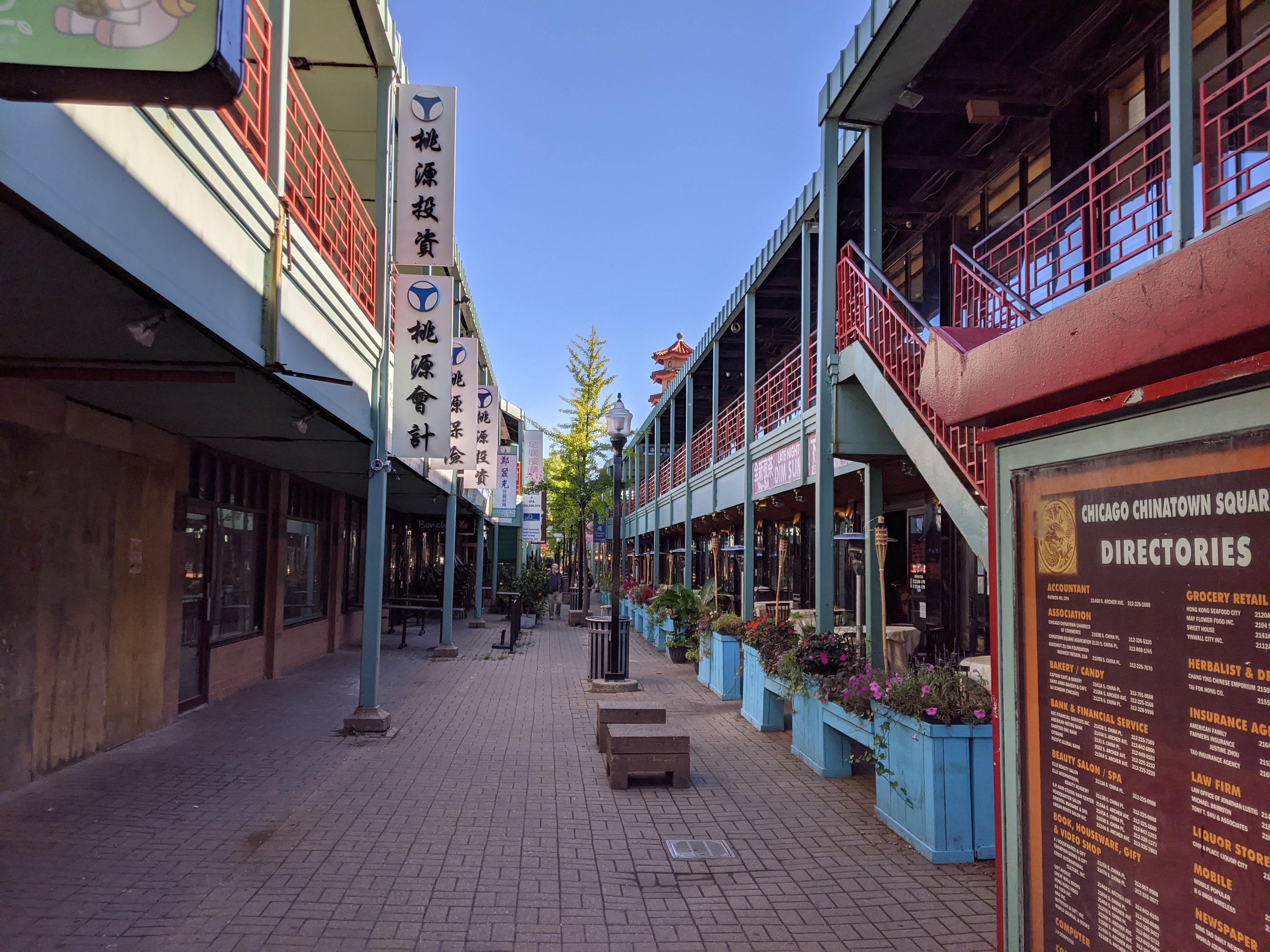
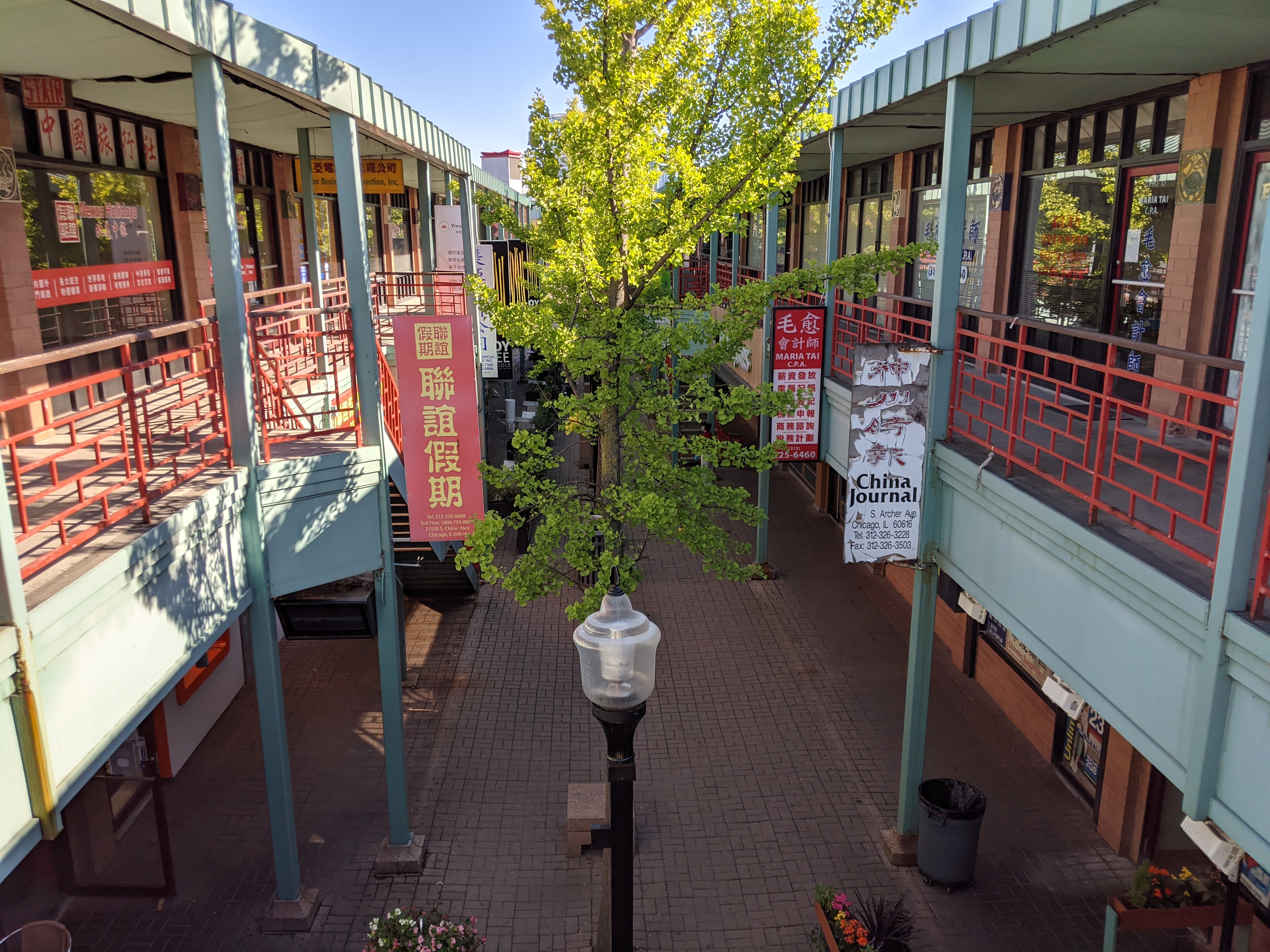
Next we headed through the New Chinatown Mall. Sitting on an old Santa Fe railroad yard, the land was originally railroad land, before being sold to Chinatown after the area had been crowded out by highways, and the locals were running out of room14. Consisting of design features similar to the Chinese imperial court15, the outdoor mall has been decorated in red and green, symbolizing luck and wealth, and giving the area a much more traditional feel – it would be hard to guess the that this part of Chinatown is merely 27 years old, given the timelessness of the architecture, and the attention to detail taken in the design, from dragons engraved in pillars to traditional shopfront signage.
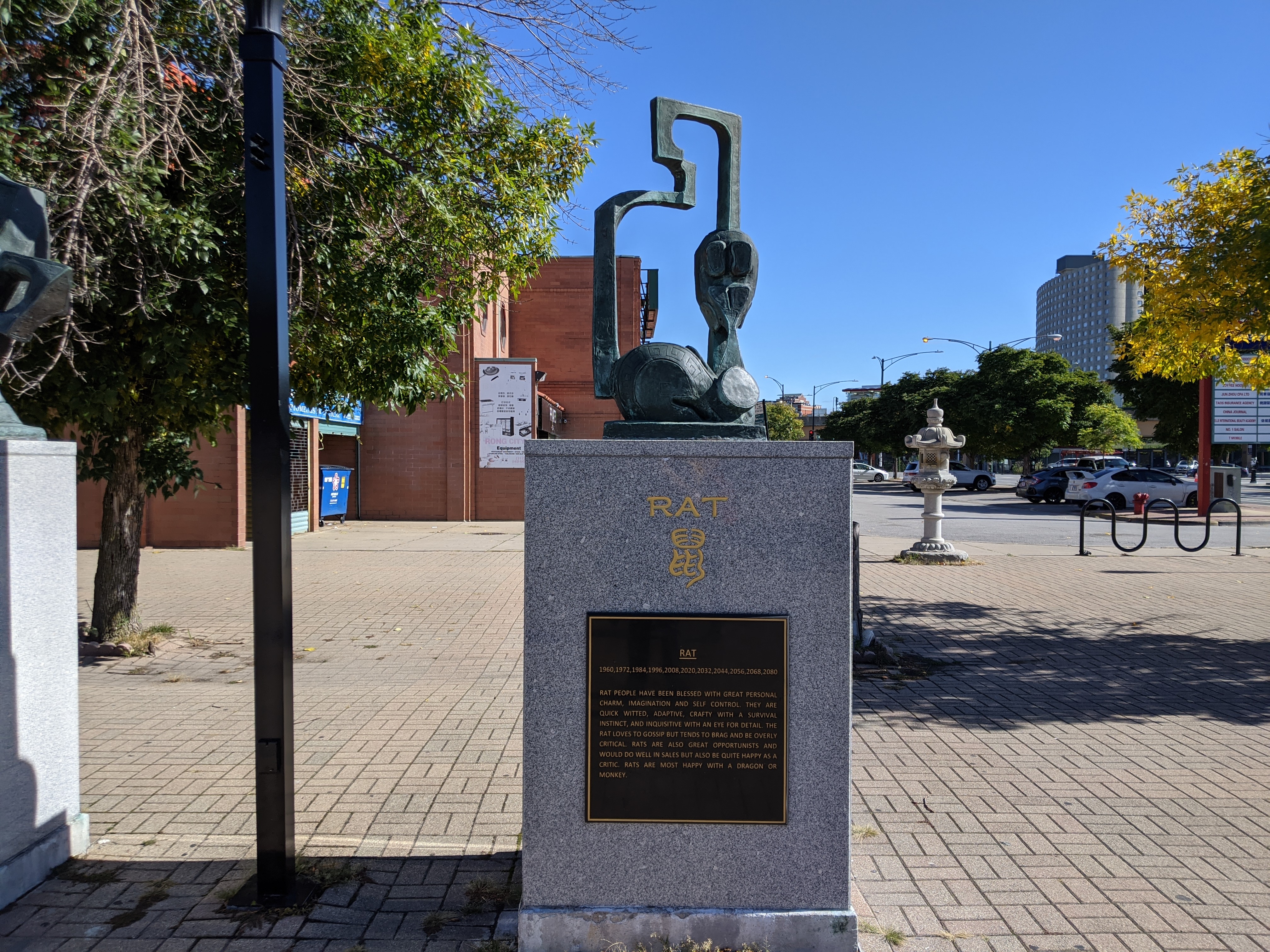






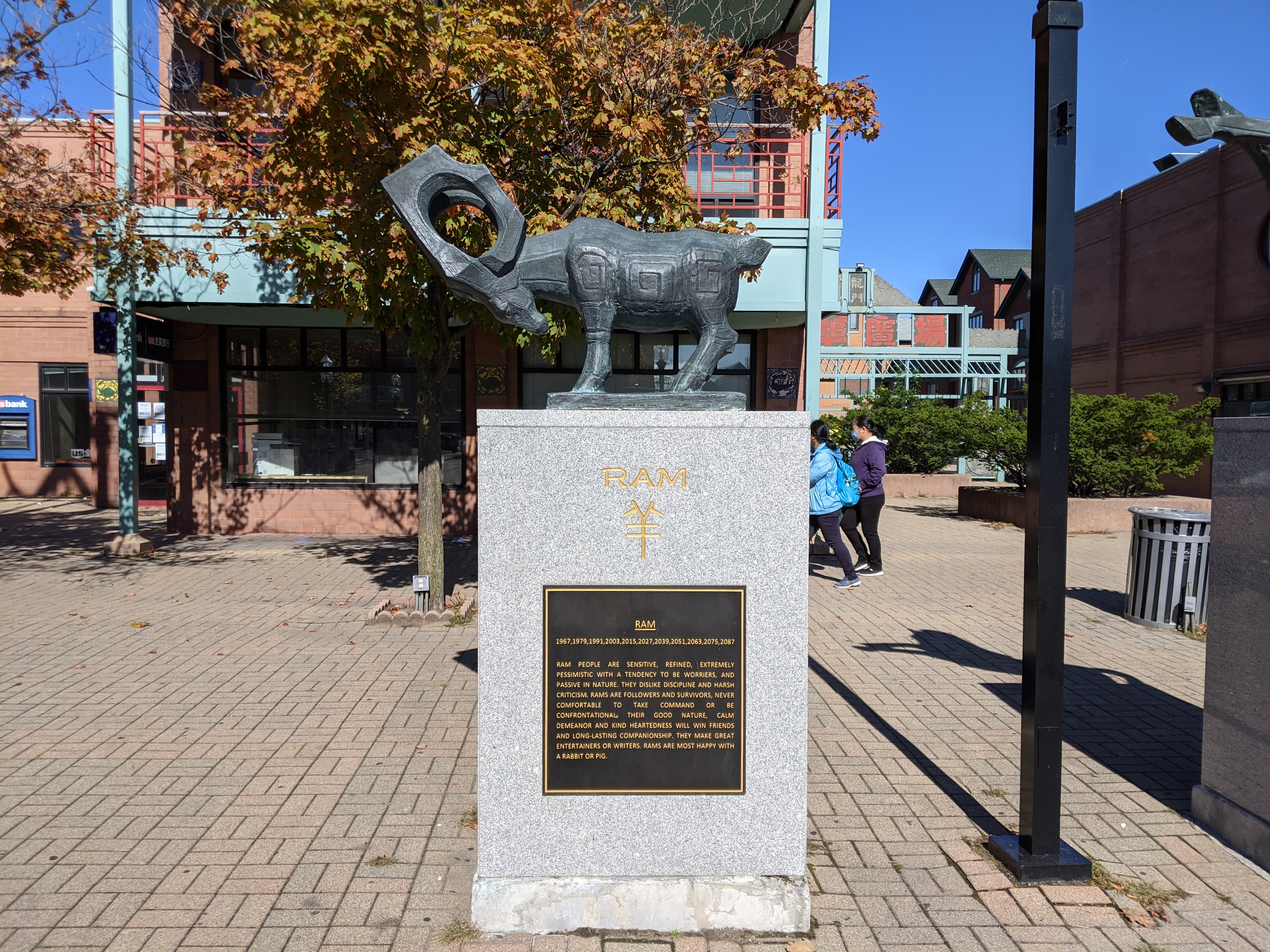

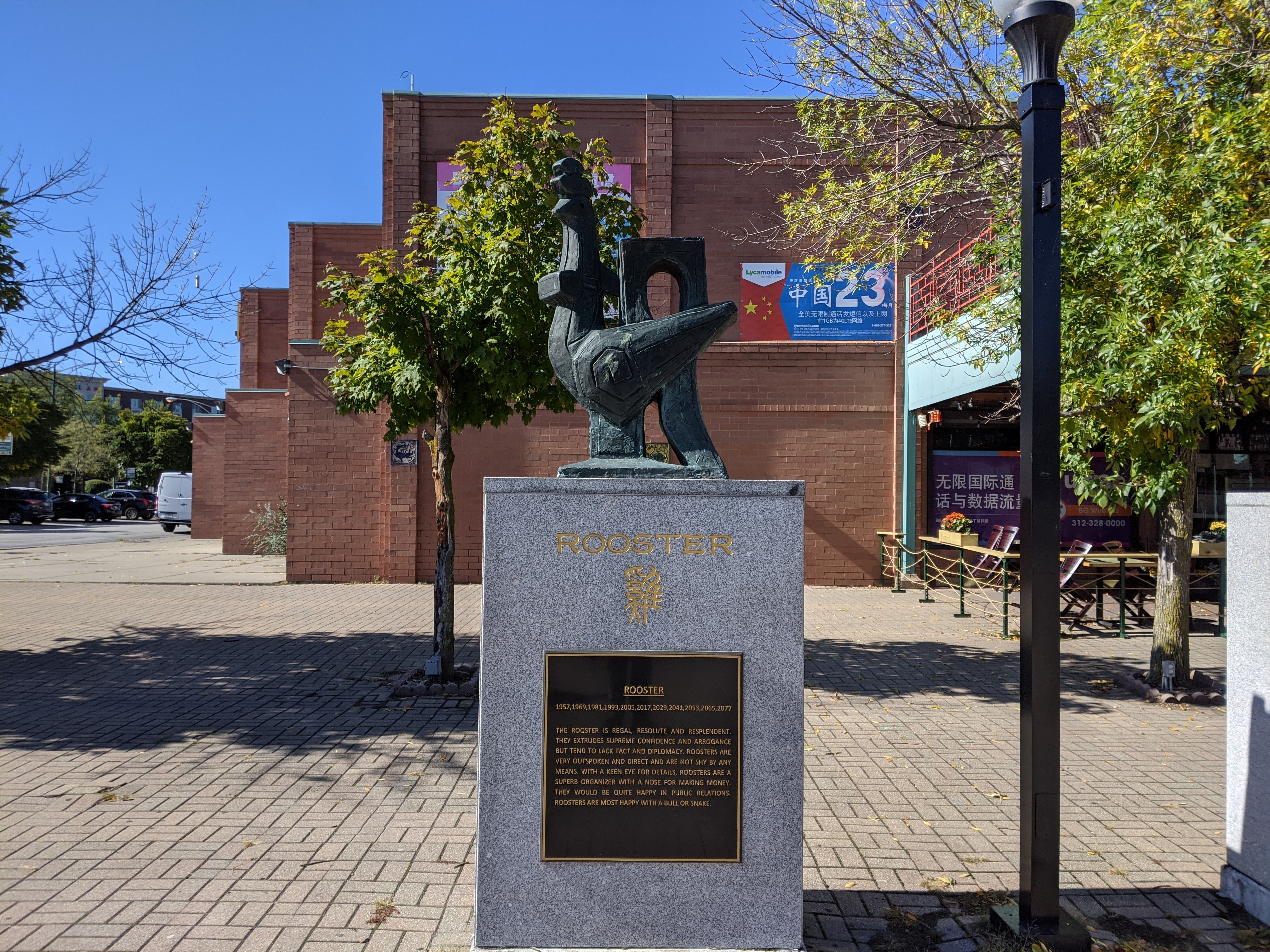


After walking though the mall (both up and down) we came out into the expansive Chinatown Square, the heart of the site and where the 12 bronze zodiac figures sit on pillars explaining what they represent, and the characteristics that people who were born in the year of that zodiac sign exhibit. According to my zodiac, I am a snake, which is considered ('Graceful, Charming and Romanic','tight with money' and 'possesive, Demanding and Scheming') authough I feel I do not share many of the characteristics that snakes exhibit. There is also an ornate stage at the center of the square, and a gate uniting the 2 main Asian groups that have significant presence in Chicago – immigrants from Pakistan, India and Nepal, and China, Japan , Korea and Southeast Asia. Guarding the square are 2 lions for warding off evil spirits16, as is tradition in Chinese culture. The most artistic part of the square is actually hidden from inside the square itself – a mosaic of over 100,000 mosaic tiles facing Archer. Produced in Tianshan, it was taken apart and shipped to the United States, before being reassembled over a period of 3 monthsPlaque. It represents the arrival and journey of the Chinese in the United States, from their arrival on the west coast in search of gold and labouring on the Transcontinental Railroad to current chinese establishing peace and community, and is fascinating to look at.(Pictured Below)



Next we come to my favorite building in Chinatown – the stunning Chinatown library. This building (where this blog was written!) is home to a significant body of books, including many on Chinese American history and culture. Designed and built in 2015 by SOM, architects behind the Burj Khalifa and John Hancock Center, the building is sustainably certified – it has a nature garden on its roof17. Designed based on Feng Shui design principles, the 360 degree windows mean from the inside you can see the Willis (Sears) Tower to the north and the Chinatown gate to the south all whilst reading a book. I particularly like how bright the building is – it makes it far more comfortable to read in than a traditional library. There is also a large, colorful mural above the second floor, "Universal Transverse Immigration Proclamation," which was painted by CJ Hungerman and represents Chinatown's past, present and future development18. One notable thing about this project is the input from the community, to create artwork and a space that can enhance the neighborhood.

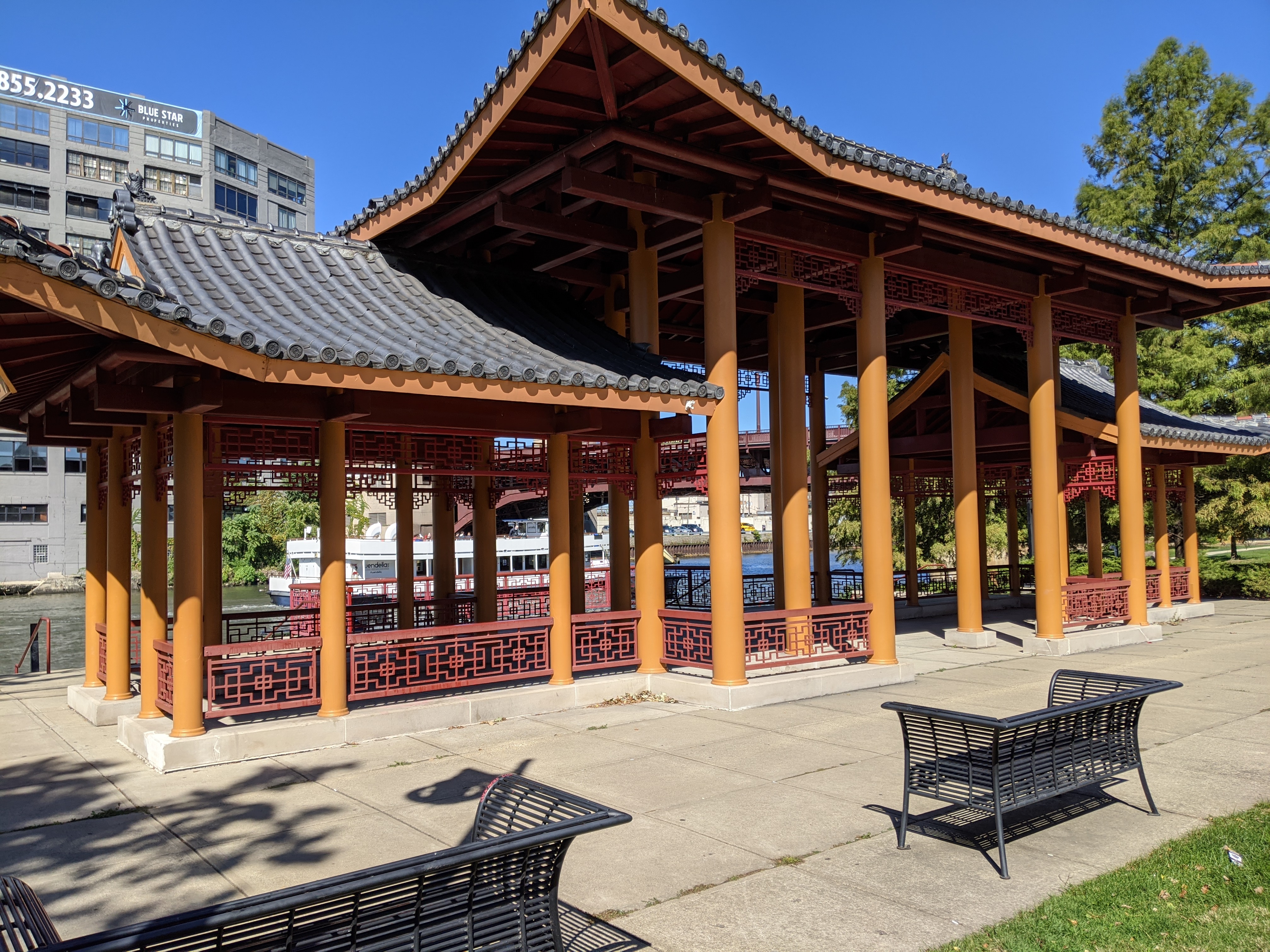
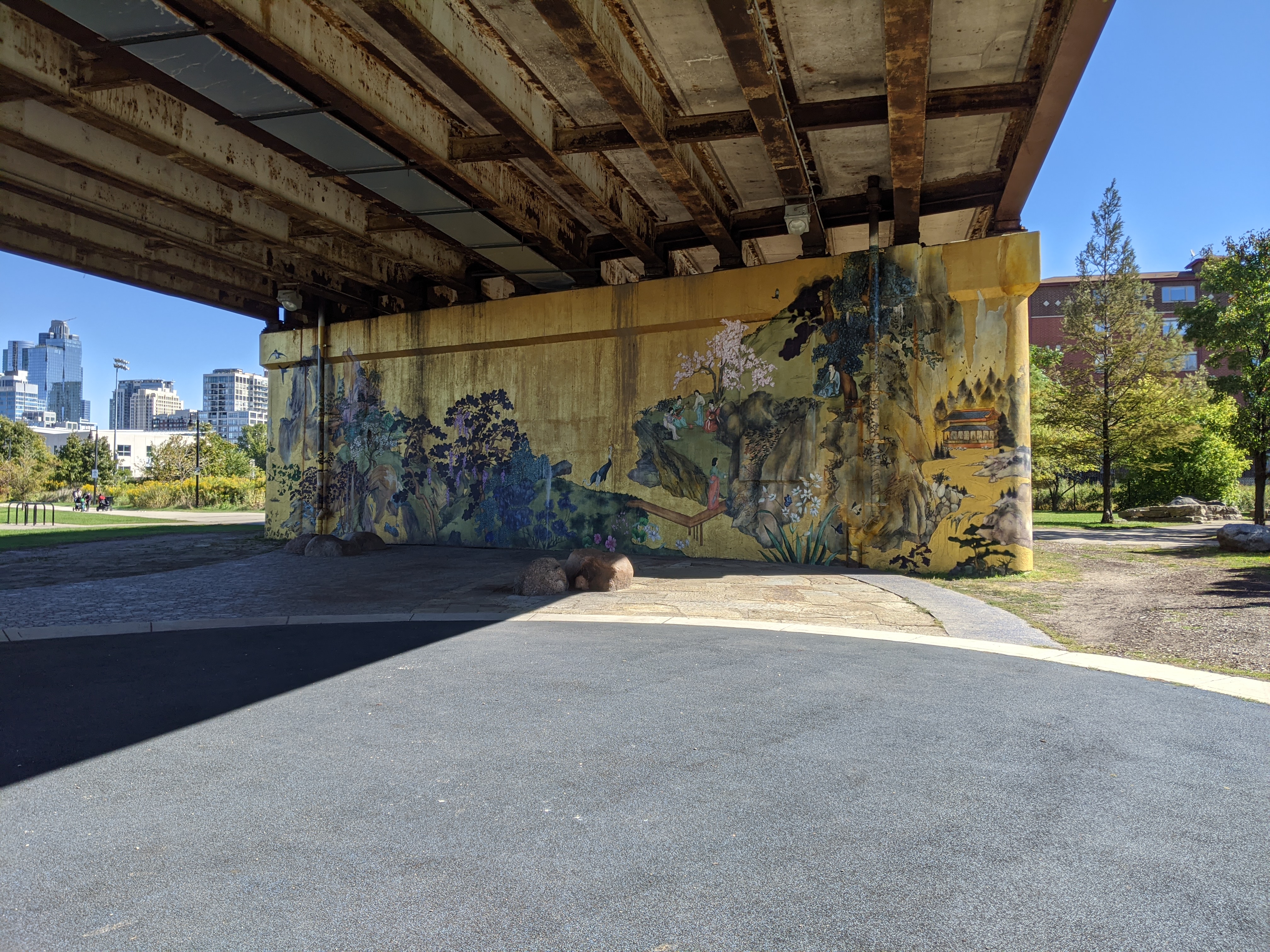
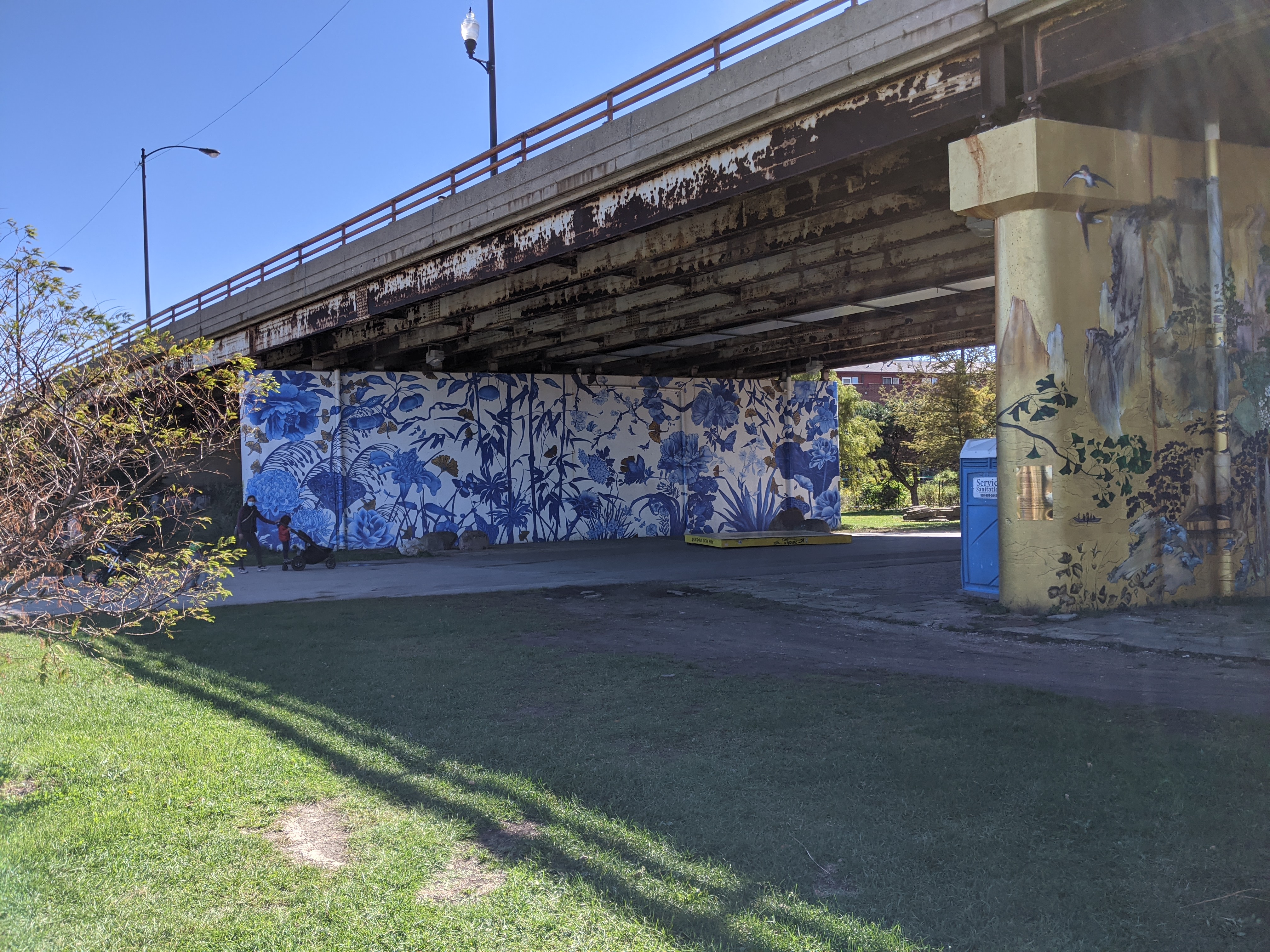
Weaving in and out of railroad tracks, roads and the 'L' is Ping Tom Park – the final place we visited on our trip. Once again built on ex railroad land, the first part of the park was built in 1998, and has been expanded ever since – it gained a field house in 2013, and 5 acres of land to the north of the site are bookmarked for further expansion19. The park was originally built as, like in the case of Sun Yat Sen Park to the south, there was no parkland left in the neighborhood after its parks were bulldozed to build highways. The park now has a wide range of facilities, including kayak rentals, a pool, a gym, outdoor play areas and 17 acres of landscaped gardens. It also has a water taxi stop, built behind a pagoda (a traditional Chinese building, usually located in a park) 19. The most surprising things about the park however were 2 huge murals painted under the highway, one of a traditional Chinese cherry tree garden and the other of trees in the fall. Both add more color to the neighborhoods newest green space, and disguise the concrete pillars that intrude on the parkland. They also grant a feeling of peace to the park.
Chinatown is today one of Americas largest – the only larger Chinatown is in San Francisco, the gateway for many ethnic Chinese into the ‘land of opportunity’. Chicago’s Chinatown is the only one that’s growing, representing the city’s continual ability to attract people from all over the world, just as it did generations ago. Uniquely, Chicago has worked to grow its presence and investment in Chicago, making major investments (such as library and parks) in a community that has been all but forgotten in most other American cities4 and has lead to a thriving Chinese community less than a mile from the loop.